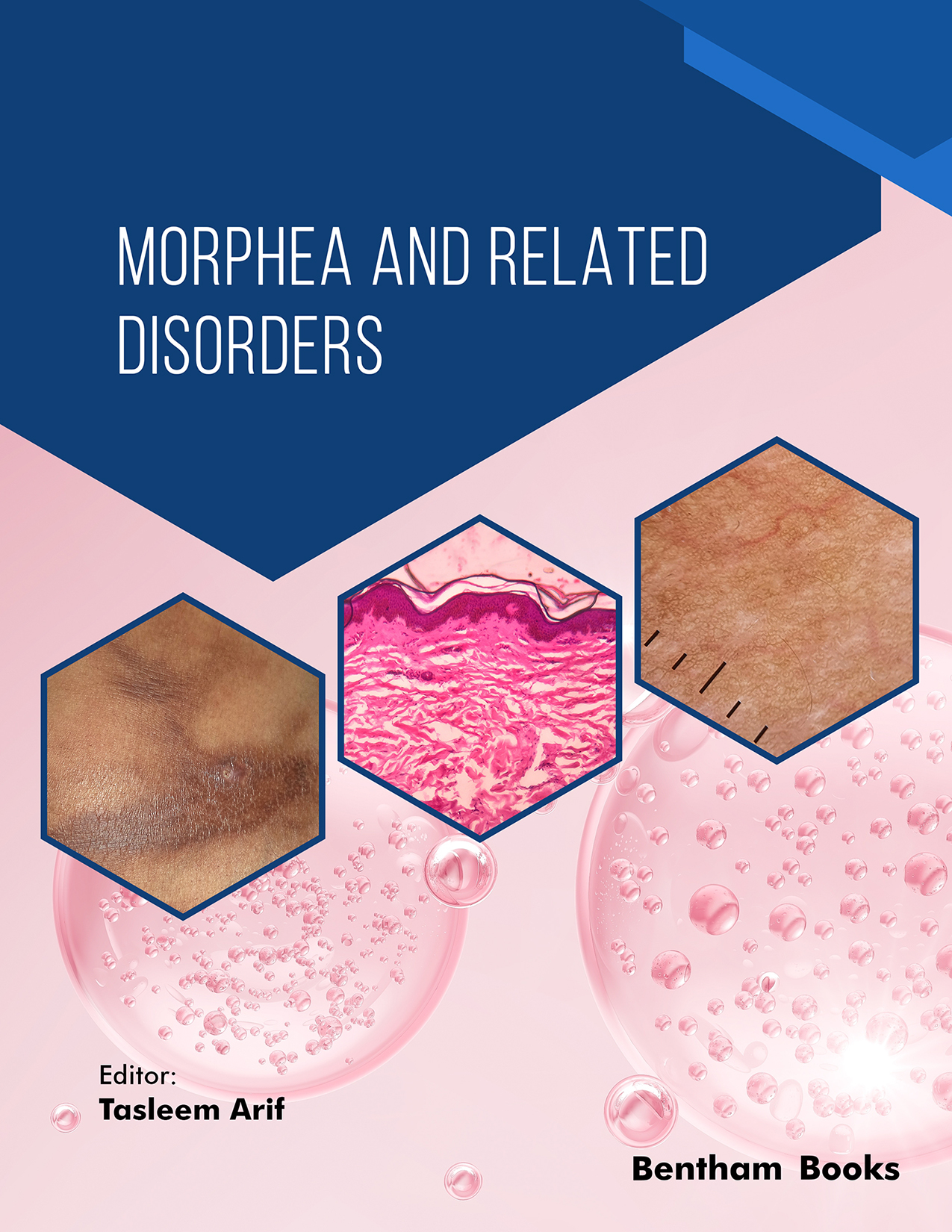The aim of this book titled “Morphea and related disorders” is to give a comprehensive and detailed description of morphea and some of the disorders related to it. Morphea as a subject, has not been addressed adequately as other topics in dermatology like pigmentary dermatoses, bullous disorders, psoriasis, atopic dermatitis, etc. Patients of morphea are mainly managed by dermatologists and rheumatologists though other specialties like pediatrics, internal medicine, gynecology and obstetrics, and orthopedics are also involved in managing such patients. There have been several debates regarding various aspects of morphea especially its terminology, classification, etc. Unfortunately, I couldn’t come across a single book, which has exclusively addressed morphea in total. Moreover, there has been plenty of confusion regarding certain conditions like Linear atrophoderma of Moulin, Parry Romberg syndrome, Idiopathic atrophoderma of Pasini and Pierini, Eosinophilic fasciitis and Lichen sclerosus; whether they constitute subtypes of morphea or they are separate disease entities. Thus, there existed an unmet need for a book giving an in-depth understanding of morphea and to give a compendious account of such bewildering conditions. Through this book, I have tried to address such issues.
The inspiration for writing the book on this subject came in 2012 during my dermatology residency programme when I was assigned thesis related to scleroderma. My research was based on both localized (morphea) as well as systemic (systemic sclerosis) forms of scleroderma. Since, the enrollment of my first patient for thesis research, I have been collecting data, figures, etc. as a preparation for this unique book project. So in other words, the drafting for book has been for the last 2-3 years but the actual preparation has been there for a decade. One of the major boosts to my confidence to write on this subject came from New England Journal of medicine (NEJM). Every physician is well aware of the impact and reputation which NEJM has in medical science. My basic research on morphea and systemic sclerosis was published in 2015 in BMC Gastroenterology Journal. That research was reviewed by NEJM in their journal watch and they concluded their journal watch based on findings of our research. That gave me an impetus to write on scleroderma. Since then, I have consistently made research on scleroderma and published around 25 research articles related to it. With such numbers and expertise in scleroderma, I felt probably I can attempt to edit and author a book on morphea. The everlasting prayers of my parents for my success have been a pillar in shaping my career.
Being the solo editor as well as author/co-author of 12 chapters (out of 20 chapters) of this book, the journey of this book for the past 2-3 years has seen lots of ups and downs. One of the major reasons was Covid-19. Apart from that, this era has been full of trials to me and my family. We have faced practically some calamities. At one stage, the circumstances became so difficult that I felt I will not be able to edit or author this book. But massive credit goes to my wife, Dr Marwa Sami, who knew what this book means to me. Despite our strenuous and back-breaking conditions, she kept me motivating and giving me timely reminders to complete this book. I don’t feel this book could have been accomplished without her continuous motivation.
There are several features which add uniqueness to this book. Probably, the first book which has been written exclusively on morphea describing it’s all parameters ranging from etiology to treatment. There are individual chapters’ on topics like linear atrophoderma of Moulin, Parry Romberg syndrome, Idiopathic atrophoderma of Pasini and Pierini, Eosinophilic fasciitis, Lichen sclerosus and Pediatric morphea. Even in the most advanced textbooks of dermatology, we can hardly find any substantial account on such topics. Every chapter begins with a table having the main substance summarized in the form of chapter synopsis. Learning points in the form of a table are provided at the end of each chapter so that readers can conclude what they have learnt from the chapter. The text of each chapter is enriched with ample number of boxes and tables to enhance the readability. Boxes are provided to summarize the content of a particular section for quick revision. This book will serve as reference book to dermatologists, rheumatologists and physicians ranging from resident to professor as well as practicing physicians. Ultimately, I am hopeful that readers will unveil several horizons related to morphea and its related disorders while reading this book.
Tasleem Arif
Department of Dermatology, STDs, Leprosy and Aesthetics
Dar As Sihha Medical Center, Dammam, Saudi Arabia
Ellahi Medicare Clinic, Srinagar, Kashmir, India

